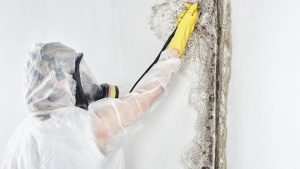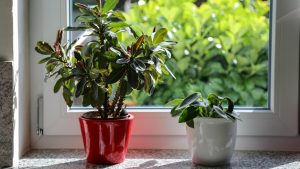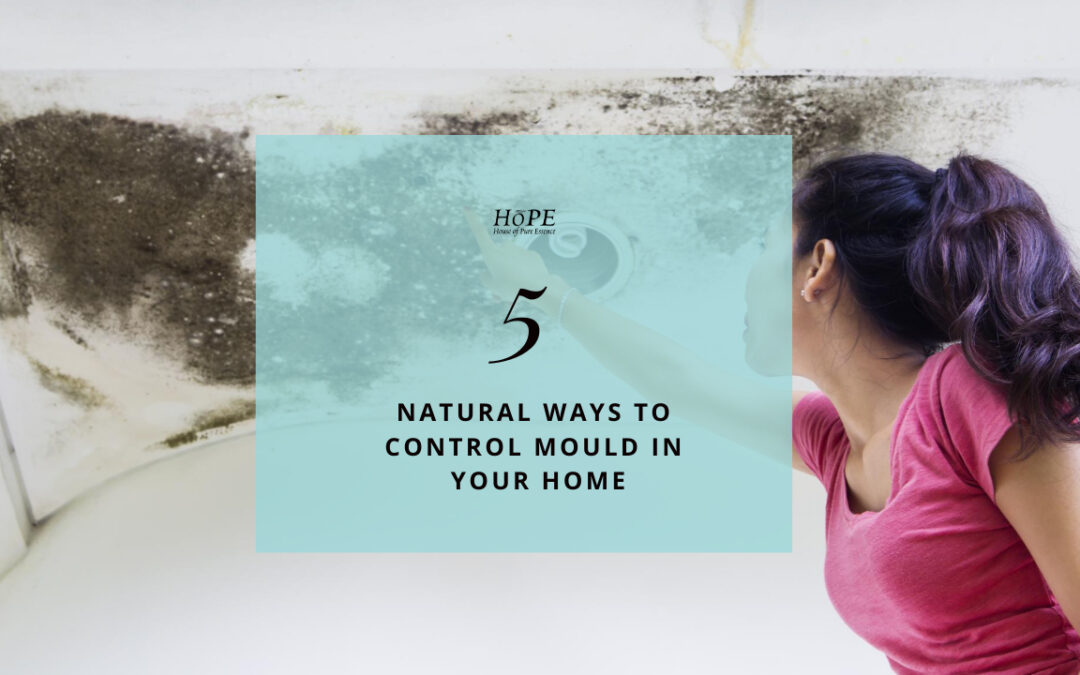Want to listen instead of reading? Click below:

Mould in the home can be a health hazard and cause significant damage to your property. In this blog post, we’ll look at some natural ways to control mould in your home, as well as some of the most common causes of mould in your home and what you can do to prevent them.
What are the different types of mould and mildew?
Mould and mildew are two types of fungus that can grow on many different surfaces. Mould can be found in moist environments such as bathrooms, kitchens, and other areas where water collects, while mildew grows on fabrics or other materials. The two diseases have different symptoms and require different treatments. For example, mould can cause black spots or spots that change colour, while mildew causes a musty smell.

How to Prevent Mold and Mildew
1. Keep Healthy Humidity Levels
Mould and mildew prosper in a humid environment, so keeping your humidity levels down is essential. In locations that are prone to extreme moisture, ensure you aerate. Turn on the vent fans when utilizing the kitchen area, bathroom or basement. Have them repaired or installed by an electrical contractor if there are no vent fans in these rooms. Also, consider installing whole-home dehumidification or plug-in dehumidifiers.
You can also take measures to manage the humidity levels in your house with your air conditioning system, which might or may not have a humidification system built in. Regardless, running the air conditioning system will help dry and distribute the air. A closed-up home in the summer without a/c and little air movement will develop the humid, dark and warm conditions required for mould growth.
You should also ensure that your air conditioning system is thoroughly cleaned and sanitized to have healthy air.
2. Fresh Air

Open windows can help increase the ventilation in your home– and are a great way to lower indoor carbon dioxide levels. High carbon dioxide levels can trigger decreasing oxygen levels in the body, hindering oxygen circulation to the brain. If your house has been closed for several months, carbon dioxide can develop, specifically in rooms where people invest the most time. Fresh air will help dry moist, mouldy areas and minimize odours and stuffiness. Open up a window or more daily for 5-15 minutes to provide your house with some free, natural ventilation.
3. Usage Natural Cleaning Products
When dealing with mould (and cleaning your home in primary), attempt to stick with cleaners that are water-based, non-aerosol and non-toxic.
For low volume, low flow areas such as bathrooms, toilets and wardrobes, you can use Gelair™ Tub – Tea Tree Oil for Bathrooms, Toilets, and Wardrobe.
Benefits of Gelair™ Tub – Tea Tree Oil for Bathrooms, Toilets, Wardrobe:
- Treats air and dust to control micro-organisms, bacteria, and mould.
- Patented formulation helps reduce household odours.
- Natural essential oil freshness.
- Hygienically deodorize your home every time you use it.
- Environmentally friendly.
- It helps keep my family protected against germs-bacteria and diseases.
Remove germs and bacteria and sanitize surfaces, tile grout, and silicone with Gelair™ All Purpose Tea Tree Oil Spray
4. Dry Wet Areas
Although you ought to prevent poisonous cleaners, that does not mean you shouldn’t frequently tidy the surfaces in your home. Entering into the routine of cleaning and drying the surface areas in your restroom and other wet areas is a great way to keep your bathroom clean and free of mould and mildew.
Mould can’t grow without moisture, so it is essential to dry damp locations in your home instantly. For example, a dripping pipe, a moist basement and even a spill on your carpet must be dried thoroughly and as rapidly as possible (within 24 hr). Also, ensure you don’t leave damp clothing or bath towels too long. Creating a tidy product that has been jeopardized by mould is challenging.
Fix any plumbing leakages or water concerns to eliminate the sources of moisture in your house. Some waterproofing services consist of:
- Fixing and cleaning up gutter and downspout systems
- Preserving and installing a basement sump pump
- Sealing window and foundation leaks
- Improving drains by repairing lots, unblocking sewage systems, and setting up new drain systems
- Repairing leakages as quickly as you discover them
5. Keep Indoor Plants

Presenting some houseplants into your home is an excellent way to improve indoor air quality. Live plants can assist in eliminating VOCs, including benzene, paint, and formaldehyde (a by-product of chemical based-cleaners).
So, now you know how to prevent and control mould in your home. Mould feeds off moisture, which is why eliminating the source of moisture is key. We hope this article helps you identify and eliminate sources of mould in your home. If you have any mould-related questions, please post them in the comment section. We are always glad to hear from our readers!
Follow Us
Leading e-commerce, funnels, and affiliate software. Alternative to Shopify + Clickfunnels, fraction of the price.









